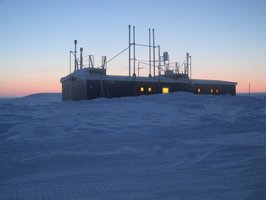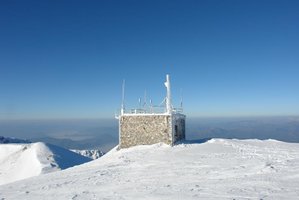iClimate member Ulas Im Leads Research into Cloud Formation and Climate Impact on Mount Helmos
In a pivotal project for climate science, iClimate researcher Ulas Im and his team are studying cloud formation at the peak of Mount Helmos in Greece. With partners from 12 European countries, including Aarhus University, this research aims to refine our understanding of cloud behavior—a major uncertainty in climate models.
Investigating Cloud Formation and Particle Interactions
Mount Helmos offers a unique vantage point for studying clouds, as its peak is enveloped in cloud throughout the winter months. Here, the research team, part of the EU-funded Clean Cloud project, is using sophisticated instruments to investigate how clouds interact with particles like dust, pollen, and human-made pollutants. Without particles, clouds wouldn't form, as water vapor requires surfaces to condense. This experiment sheds light on how these particles influence cloud properties, such as whether droplets become ice or remain liquid, which in turn impacts cloud reflectivity and Earth’s temperature.


From the Arctic to the Mediterranean
Researchers first deployed two high Arctic fields experiments at the Villum Research Station (VRS) in northeastern Greenland, a pristine environment where clouds interact primarily with natural particles. The second field campaign at the VRS has been extended through collaboration with the NASA ARCSIX campaign, where aircraft measurements have been conducted over VRS in parallel to the CleanCloud experiment, leading to a unique closure dataset of bottom-up and top-down vertical aerosol profiles. The research focus has now shifted to the Mediterranean. Unlike in Greenland, this region features a larger mix of natural and human-made particles, including Saharan dust and emissions from industrial and transportation sources. Such a blend has a unique impact on cloud properties, potentially cooling the climate by reflecting sunlight but also adding to the complexity of climate predictions.
Anticipating a "Post-Fossil" Atmosphere
As global emissions decrease due to international agreements, human-made particles will hopefully lessen, bringing natural aerosols to the forefront. This shift, termed “post-fossil,” highlights the need for improved models to predict how cloud dynamics will evolve and impact future climates.
Ulas Im’s team plans to publish initial results within a year, offering fresh insights into how clouds shape our climate—and how humans shape the clouds.
